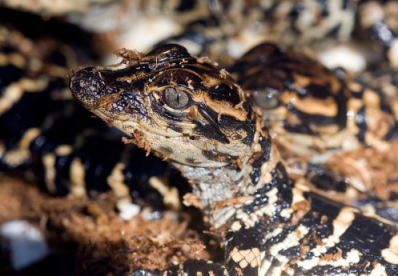Headings and subheadings: alligator
The Grammar Bit!
Find out more about the American alligator by reading the information text opposite. You’ll notice that it includes a main heading (underlined) to help the reader understand what the whole text is about.
You’ll notice that it also contains several subheadings (bold). Subheadings break up the text into interesting chunks or paragraphs of information for the reader to enjoy and learn from. If the reader is looking for a specific piece of information, a sub-heading can act as a quick guide.
Once you have read the whole text, with your talk partner, give the heading and each subheading a star rating.
1 star = OK
2 stars = good
3 stars = excellent
Be prepared to explain your star ratings!
(Teacher’s note: Capitalisation in headings and subheadings can take various forms. The key at this level is to encourage consistency.)
Scintillating Sentences
The American Alligator
Prehistoric characteristics
Managing to avoid extinction 65 million years ago, alligators are about as close as a human will ever get to seeing a living dinosaur. Like the ‘terrible lizards’ of the past, alligators are cold-blooded creatures, and their armour-plated bodies, toothy grins and muscular tails are all evidence of their link to their prehistoric past.
Water life
American alligators live mainly in freshwater rivers, lakes, swamps and marshes. With their webbed feet and strong tails, they are built for the water. By slowing down their heart they can easily stay underwater for 30 minutes (and sometimes much longer).
American alligator diet
Adult American alligators are powerful predators at the top of the food chain. They feed mainly on fish, turtles, snakes and small mammals. They capture all of these creatures by lurking in the water and then launching a surprise attack. Fortunately, attacks on humans are rare. During the winter months they do not need to eat at all.

Did you know?
Baby alligators are called hatchlings. They are 15-20 cm long and have distinctive bright yellow or whitish stripes. The stripes provide them additional camouflage amongst reeds and wetland grasses.

